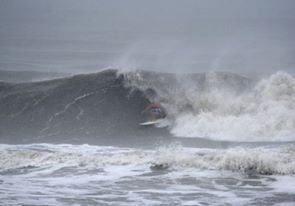Blown Away wrote:Teban54 wrote:Captain Barbossa's Tropical Cyclone Timeline:
1. June 1st: Everyone is excited about the upcoming season. Many are anticipating upcoming action later in the month, but most know that the real action will most likely start in August.
2. July 1st: One or two TCs manage to form in June. Many complain about how weak and disorganized the cyclones are.
3. July 15th: Lots of SAL is present in the Atlantic basin. However, most people are not surprised by this, as they were expecting it.
4. August 1st: Atlantic is still slow. Dry, stable air is present in the tropics. However, models are beginning to suggest things will be changing within a few weeks.
5. August 15th: Models show nothing in the near-future. Many are becoming skeptical about the season amounting to anything significant.6. August 23rd: There are multiple invests in the Atlantic and conditions are rapidly beginning to change. The models begin to show cyclogenesis. Many quickly change their minds about a quieter season.
7. August 24th: Some experts continue to doubt signs of the Atlantic awakening. These experts issue outlooks that support original ideas of a quieter season.
8. August 31st: There is now at least one active TC. There is a potential that at least one TC could become a hurricane. Many people appear shocked by the increased activity.
9. September 30th: Several TCs have already formed and dissipated. A few who suggested that the season would be quiet now state that they always knew the Atlantic would spring to life.

10. November 30th: The last storm probably has dissipated by this point. Many look back at the season and state that they are surprised with the outcome.
Normal year, this timeline applies.
El Nino year likely slowing down development in September and August was expected to be more active than normal. Maybe it will, but not according to the long range models today through 8/21. We will see soon enough!
I don't understand why people talk as if September 1-30 will all be shut down, when September is climotologically still the busiest month of the season; and that the Atlantic will be dead if it doesn't wake up in
early and mid-August, when climatologically this period is still significantly less active than the "real" peak season that generally begins on August 20, and feels more like July.
Several El Nino years - even those that ended up with inactive Atlantic seasons - had at least appreciable September activity. 1997, which had no August named storms, had a Cat 3 CV storm (Erika) in September. Both 2014 and 2015 had Cat 4s in October (Gonzalo and Joaquin). Don't even get me started on September 2004.
With the atmosphere resembling the opposite of an El Nino until now, I'm not convinced that it will couple
so quickly that we'll see full-blown Nino shear in the Atlantic in just a month. But it could be just me.












